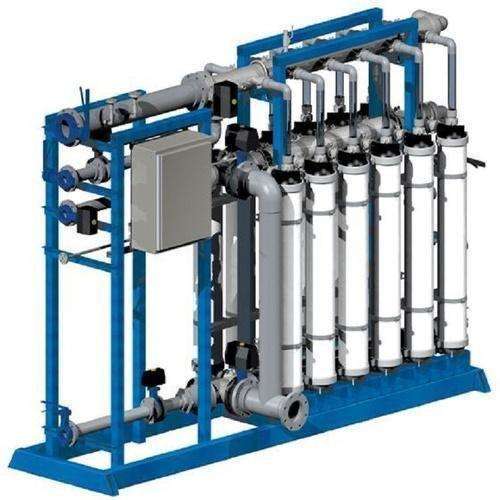Nanofiltration is a membrane separation process whose cut-off lies between that of reverse osmosis and ultrafiltration. The commonly used operating pressure is in the range of 3 – 40Bar. Cut-offs are specified as being between 180 and 2000 Dalton.
The selectivity of a nanofiltration membrane is determined by two different parameters. Firstly, retention depends on the compound size i.e. from molecular weight. As far as nanofiltration membranes are concerned, retention and permeability are also a function of electric charge and the valence of the salts and compounds in the solution. Diluted solutions of monovalent ions can mostly pass through a nanofiltration membrane unhindered while most of the multivalent ions (such as sulphate and carbonate) are retained. As for anions, retention by a nanofiltration membrane increases by order.
Similar to reverse osmosis membranes, nanofiltration membranes are composite membranes consisting of a carrier structure as well as a thin selective layer.
Membranes with good chemical resistance are now available for the treatment of acids, bases and oxidative media, therefor making the process suitable for several separation operations:
- Softening of process, product or drinking water.
- Separation of organic impurities in water treatment.
- Filtration of acids and bases.
- Desalination of organic materials.
Not only membrane materials but also several module configurations are available for the different applications.
Spiral would configurations are preferred for water treatment operations. Reduced space is required to treat large volume flows because of the compact structure of the system. One condition for the use of spiral wound elements is that the feed solution should be of high quality with a low solids concentration or should undergo elaborate pre-filtration. Spiral wound modules are also mostly used in diafiltration processes in the pharmaceutical industry.
Tubular modules are used for flows with higher viscosity or high solids concentration. Because of their free flow cross-section, treatment can take place either without any pre-filtration or with a greatly simplified technique.
Membracon’s product offerings cover a large range of systems and individual component equipment for many process applications.
In need of expert advise?
Don't hesitate to ask a question

- Derwent House, 42-46 Waterloo Road, Wolverhampton, WV1 4XB
- Tel: 01902-458-501
- Email: info@membracon.co.uk
Follow Us
Join our online community to see the latest news around Membracon and our sustainable solutions .
Our Products
- Anode Cells for Electrocoating
- Ultrafiltration Membrane System
- RO Membranes and Systems
- UV Bacterial Control
- Effluent Treatment
- Liquid Filtration Solutions
- Process Tank Integrity Check
- Rectifier

